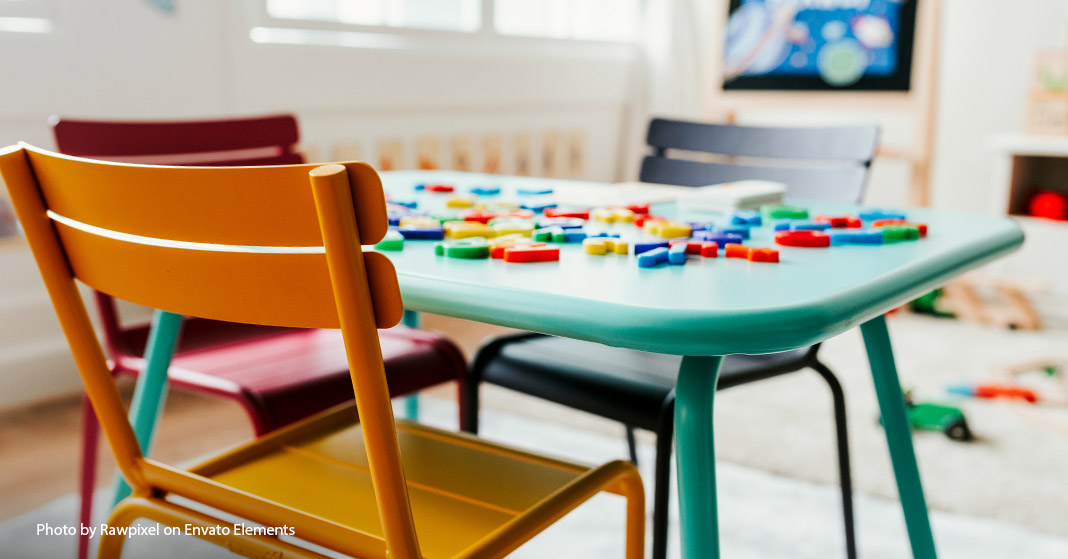
Homeschool organization can seem overwhelming for both veteran and first-time homeschoolers. Creating a homeschool room in the space where you live, sleep, play, and eat requires time and careful planning. Having good storage in your homeschool is necessary to keep all your books, papers, and supplies organized. You also need to decide which furniture and setup work best for your space. If you’re creating a brand-new homeschool room or redoing one and need inspiration, we’ve gathered ideas from homeschool moms and shared some of their tried-and-true homeschool room ideas and organization hacks to help you get your space ready for the new school year.
How to Organize Your Homeschool Room
1. Designate a space.
First, designate a specific space for school. If your house is large enough to have a separate homeschool room, go for it! If not, you can still set up a homeschool space that is efficient and conducive to learning. Whether you choose an individual homeschool room or just a corner of a room, it’s important to separate an area from the rest of your house where your children can focus on school. You should have a space as free from distractions as possible. Make sure it offers plenty of light and has a place for most if not all of your homeschool materials. This will help you keep everything organized and easy for your children to find.
2. Decide on your furniture
When deciding on homeschool furniture, consider your options based on room size, number of children, and different ages of children. You may prefer a central gathering place for your children to do their schoolwork. A table in your kitchen, dining room, or school room can work well; each child can choose their own space and spread out. If you have many little homeschoolers, conference tables may be a great choice for your school room.
3. Get your kids involved in decorating.
To keep up motivation, your homeschool area should include some fun elements that get your children excited about school. Involve them in setting up their space. Allow them to choose decorations that appeal to their creativity and personality.
Homeschool Organization Ideas for Small Spaces
You can create a well-organized homeschool area even if you’re short on space.
- Converting a closet using the shelves for a desk and overhead storage. A peg board and mounted wall light add a nice touch.
- Adding shelves, a hutch, or a built-in desk to a wall will provide a structured school area in just about any room.
- Switch out a floor bed with a raised bunk bed with desk and storage space underneath for a study and schooling area in your child’s room.
10 Homeschool Room Ideas
We have compiled several homeschool room ideas for setting up a homeschool space from different moms. Here are some of our homeschool room and furniture favorites:
Homeschool desk ideas
1. Side-to-side desks
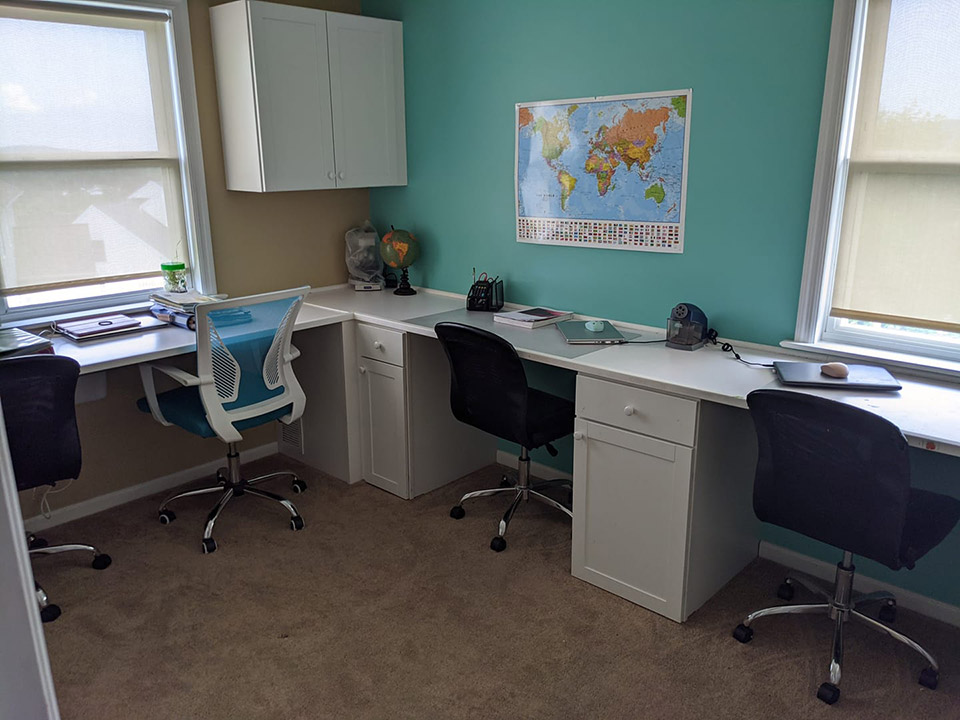
Abbie’s set up gives each child their own desk and space to work with, as well as personal storage spaces for books and homeschool supplies.
2. Murphy folding desks
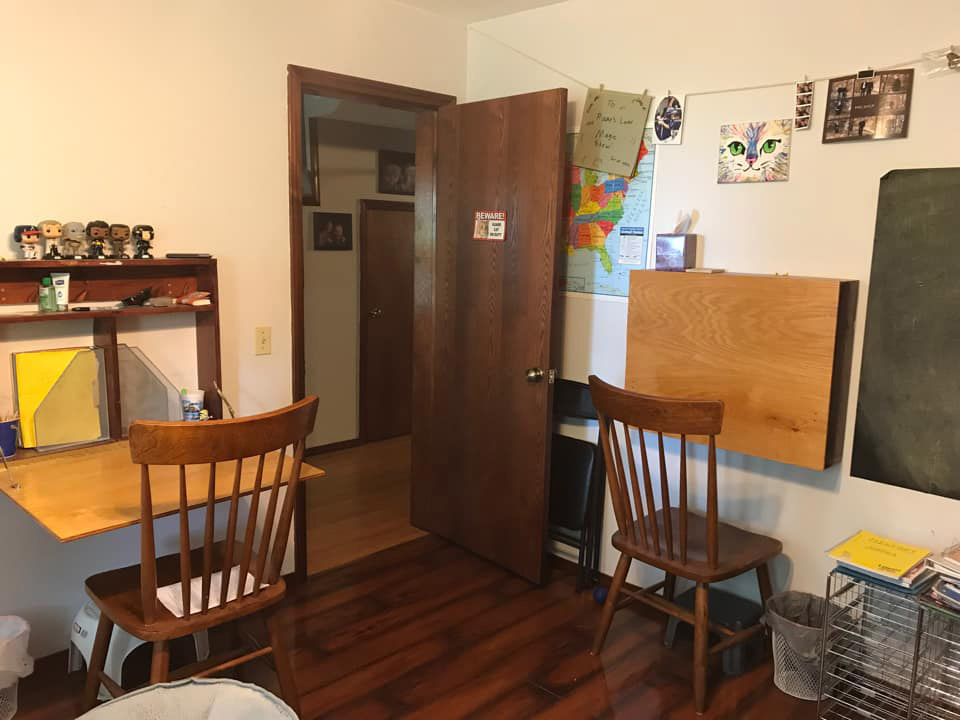
Laura and Michelle take advantage of vertical space in their homes. They both use Murphy desks so they can convert their homeschool rooms whenever they need extra space. Drop-down Murphy or folding desks are a great choice for small spaces since they don’t take up a lot of room and can be lowered or put away when not in use.
3. Medicine ball chair
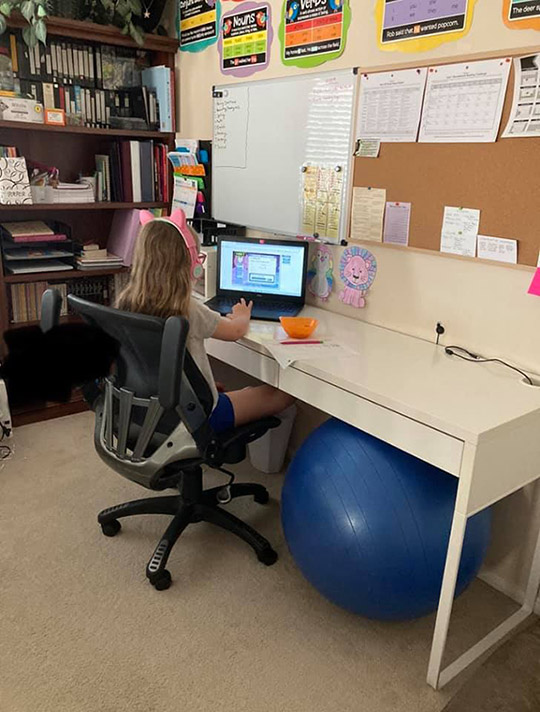
Heidi includes a medicine ball or workout chair in her homeschool room to help her daughter concentrate and get the stiffness from a regular chair out.
The best desks for homeschool organization
One key item for homeschooling is a proper writing surface. Tables work fine, but if you need a desk, here are several options to choose from:
- Desks that grow with your children. The Mecor desk accommodates children from 3 to 15 years old. Both the desk and the chair are adjustable.
- Leaning wall desks. They’re another ideal option for small spaces because you can put them up against any wall. An attached corkboard and storage drawer complete the look. You can order these online from Walmart, Target, Wayfair, Overstock.com, and West Elm.
- Minimalist desk with plenty of drawers.
- Desks with an add-on book or storage shelf.
- Chalkboard desks. Attach a chalkboard to a desk to provide more creative opportunities for your child to learn. You can also purchase finished chalkboard desks at online stores such as amazon, Wayfair, and Boscov’s.
Homeschool book organization
4. Book bins
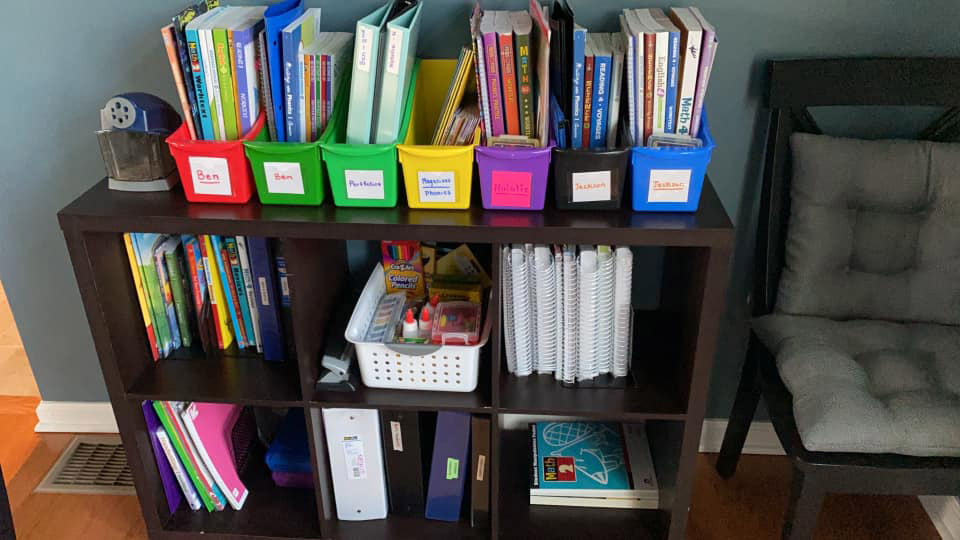
5. Cube shelving
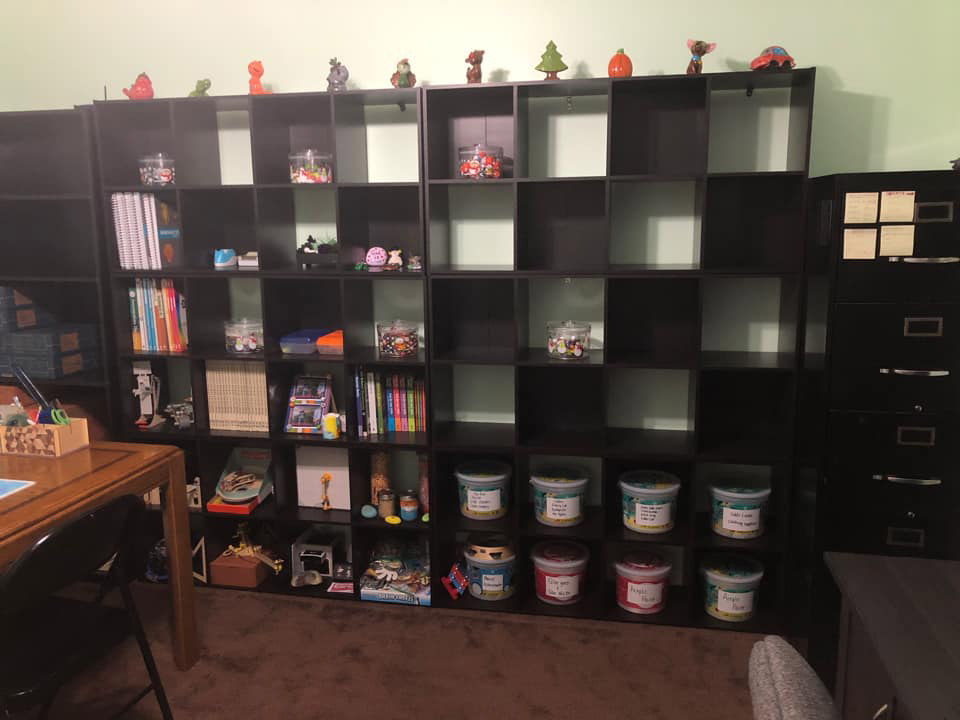
Setting up a table with chairs in the center of a room, with cube storage units and shelves against the walls for plenty of storage. This is one of the most versatile ways to organize books, especially ones of different sizes.
The best bookshelves for your homeschool
How in the world are we supposed to store all our beloved books? Here are a few ideas for creatively storing textbooks and kids’ favorite reading books.
- Rolling bookshelf carts: These can be a great option if you like to move around a lot in your day but need your books to follow you.
- Floating shelves: These are a great choice for small spaces. You can mount them on virtually any wall and above desks or headboards.
- Tree book shelfs: These shelves afford practical vertical storage. These are ideal for storing a lot of books in a small room without danger of toppling over. You can find these online at Wayfair, etsy, and Amazon. If you prefer to make your own, you can find helpful ideas on Pinterest’s or Lowe’s websites.
- Seat sack storage pocket: This fits over the back of a chair and holds several books at a time.
- Build your own book crate: You can use a wooden crate and paint. You can let your children decorate it to their preferred style.
Homeschool room set ups
6. Convertible playroom
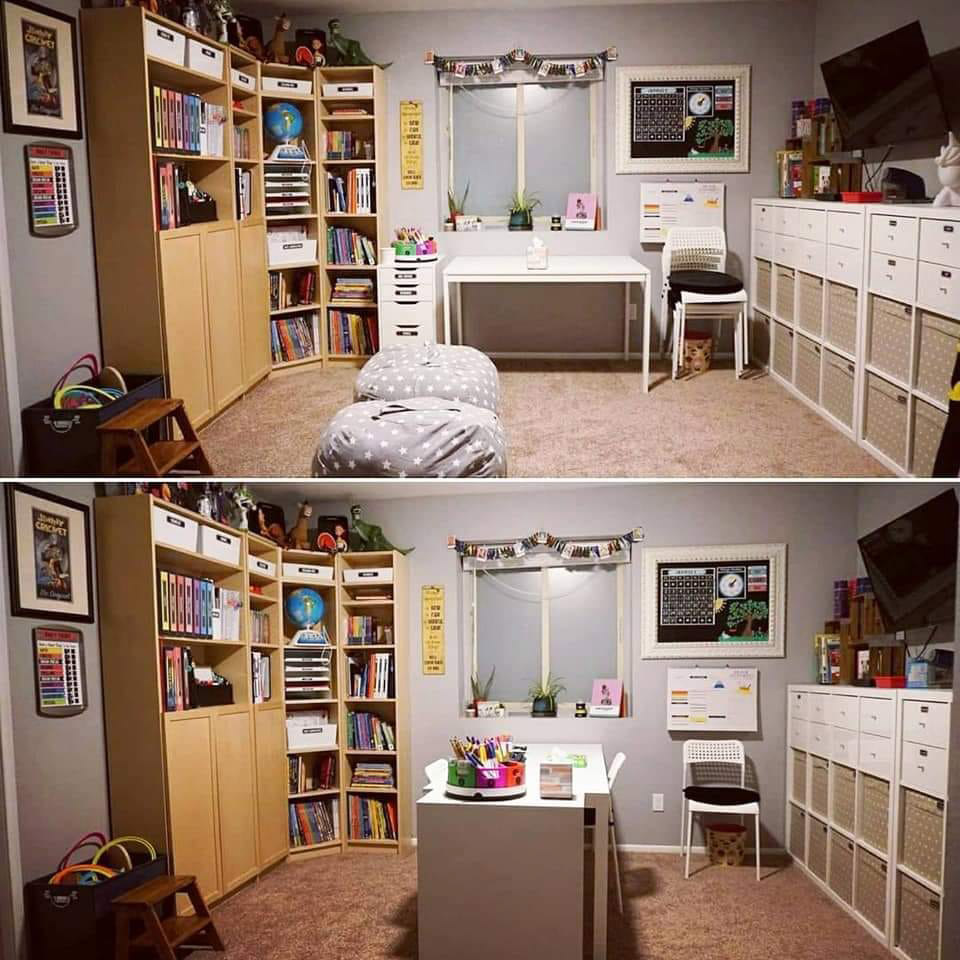
Kristin has combined her school room and her playroom. She says, “The left side of the room has all our school supplies, and the right has all the toys in the cubes. We made sure we could convert it easily on weekends for plenty of floor space for Hot Wheels and mini villages. The table extends and the chairs stack. I have twin girls, so we cast our lessons on the TV. We went with weekly/chapter folder system. Each twin has their own cubby/shelf with their books, binders, and folders.”
7. Converted breakfast nook
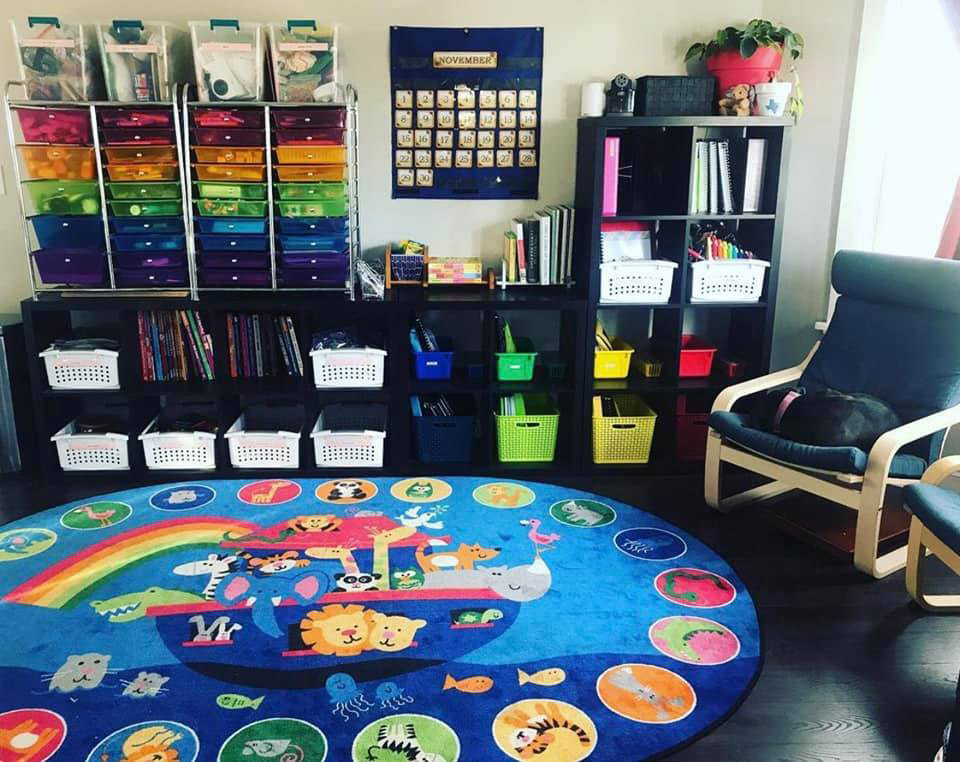
Morgan has converted her breakfast nook into her school room with lots of bright colors and things to look at and engage with.
Homeschool storage ideas
8. Closet storage
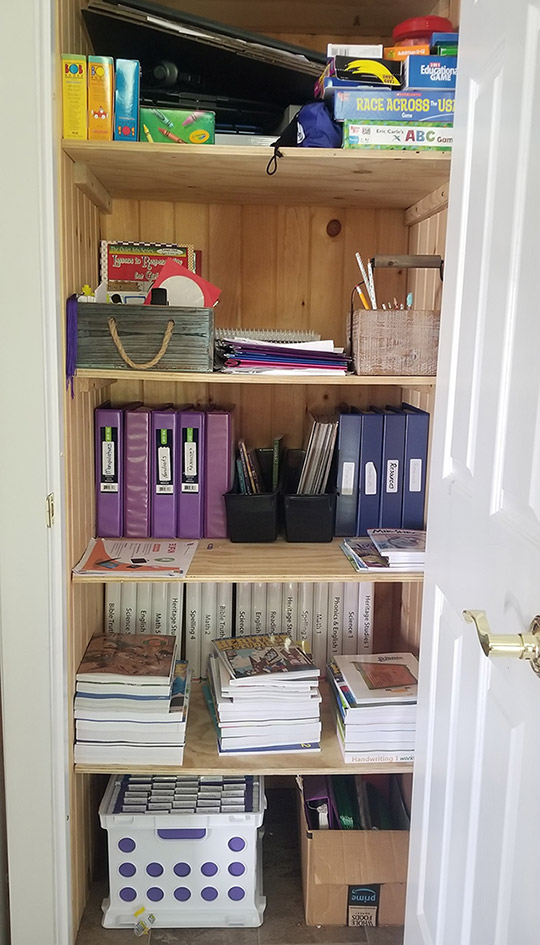
Elizabeth uses a closet and maximizes organization so she can store everything she needs in one place. She says, “School related games on top shelf, mom’s supplies on second shelf, color coded binders with handouts, manipulatives, resources on third shelf, DVDs and books organized on fourth shelf, and extra things on the floor as well as hanging file folders with daily work divided up for an easy start to the school day.”
9. Clever containers
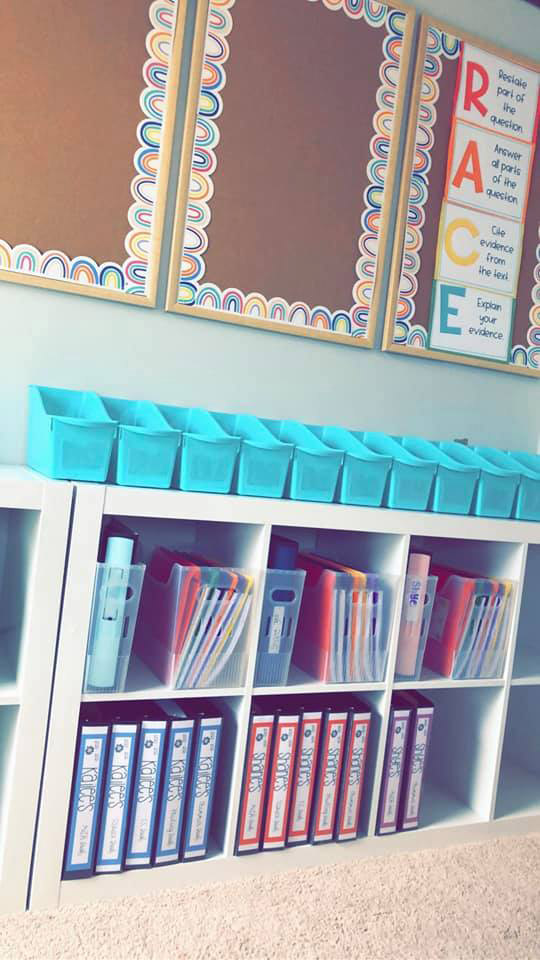
Whether on a desk or table, having a container handy will keep everything together and prevent wasting time searching for materials. Some examples include shoe boxes, plastic bins, lazy susans, and baskets. One homeschool mom even converted an old tool caddy for this purpose.
10. Fun filing
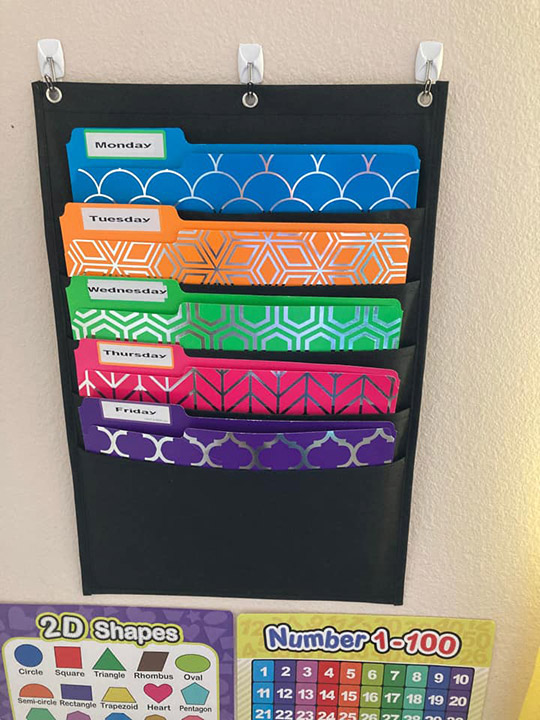
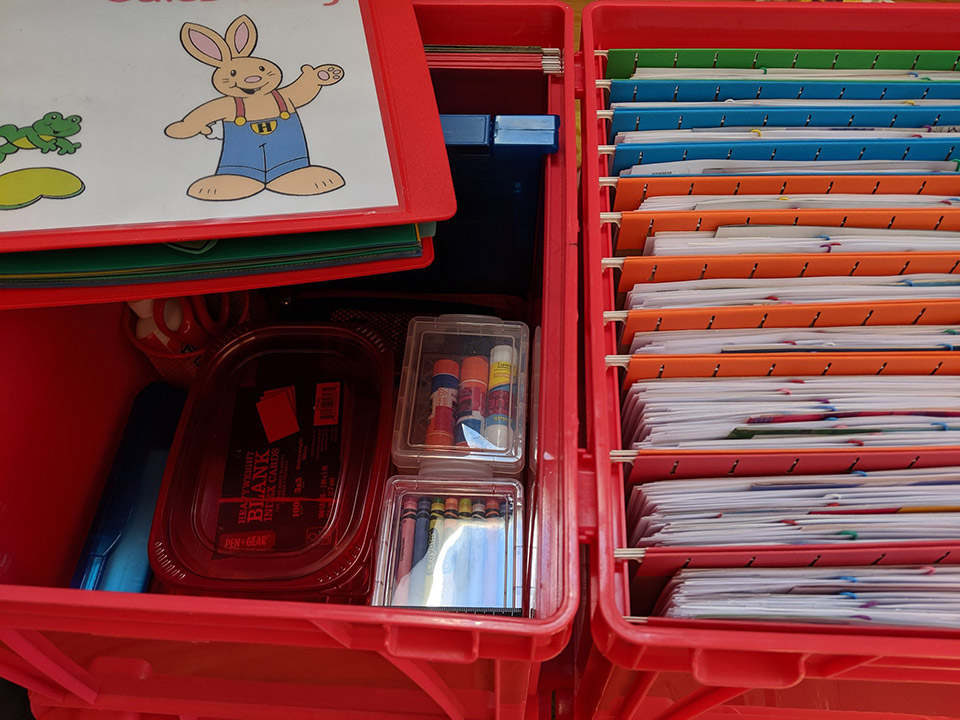
- Hanging file folders on a wall using command hooks. This can keep file folders from sliding down on shelves or getting hidden behind other books.
- Hang file folders inside a plastic bin. Bins can be placed either on the floor or on shelves for easy access.
Remember that you can always rearrange your homeschool space if something isn’t quite working for your family. Even moving a piece or two of furniture around can make all the difference. You can also add fun extra stations in your school room such as a music, reading, or craft corner.
Best homeschool furniture for storage
We all know storage space is a must for homeschooling. Here are several ideas that homeschool moms use and recommend:
- Rolling storage carts: These are convenient if you need to move materials around a lot. They also provide ample storage space for books and supplies.
- Chair desk with storage bin. Younger children can especially benefit from these, since a built-in drawer under their feet makes it easy to find what they need.
- Kid’s hutch: A built-in peg board and separate shelving units keep everything nice and tidy.
- Hanging storage cups: These can be simply mounted on a wall and are deep enough to hold pencils, markers, and crayons.
- Peg boards: These are a great space-saver for displaying your children’s art, holding small supplies in wire baskets, and posting lesson plans.
- Three-ring binders: These will prove extremely useful for keeping work sheets, handouts, extra notebook paper, and tests together. Designate one for each subject so you won’t have to rifle through a pile of papers searching for something.
- Clear plastic bins with lids: Ideal containers that come in a variety of shapes and sizes to help you easily store and locate materials.
Homeschool Organization Hacks
These simple organizational tricks may offer a solution for your organizational needs.
- Hang a clear shoe organizer on the back of a door to hold extra school supplies and maximize space.
- Turn mason jars into containers for items such as markers, pencils, glue sticks and scissors.
- Store papers of all types in a paper tray or inexpensive magazine holders.
- Use lockers to store books and other materials for each child.
- Organize math manipulatives in a tackle box.
- Mount a magnetic knife holder on a wall to hold scissors.
- Color coordinate by child. Assign each of your children a different color and buy folders, binders, notebooks, and copy paper in their respective colors. This will make it much easier for you to keep each child’s work separate.
- Store small items such as paper clips, beads, marbles, and paper fasteners in an ice cube tray.
We trust these homeschool room ideas will give you the confidence you need to organize your homeschool in a personalized, fun, and practical way. Share your homeschool organization tips with us in the comments—we’d love to hear how you’ve designed your homeschool setup!
• • • • •
Jennifer is a pastor’s wife and mom of two young girls and loves homeschooling them. During her own twelve years of being homeschooled, Jennifer developed a passion for reading and writing. She earned a bachelor’s degree in creative writing and relishes writing during her free time.
Leave a Reply